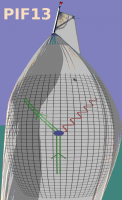Anton Ilderton
(Chalmers Univesity)
11/07/2013, 11:00
oral presentation
I will discuss recent theoretical results in radiation reaction (RR). In the first part of the talk I will describe how and where RR appears in QED, and the possibilities for measuring RR in different regimes and in different experiments (with say lasers, or Coulomb fields).
RR effects are expected to become significant in the regimes reached by next generation laser facilities. Aside from...
Rashid Shaisultanov
11/07/2013, 11:20
oral presentation
Radiation reaction effects, in particular the effects of stochasticity,
in dynamics of a high energy particle are studied by using semiclassical approach to radiation reaction.
Dr
Adam Noble
(University of Strathclyde)
11/07/2013, 11:40
oral presentation
Rapid advances in laser technology have hastened the need for a consistent and physically reasonable model of how losses to radiation affect the motion of electrons. We report on a recent investigation of the Ford-O'Connell equation, exploring its relation to other commonly used descriptions of radiation reaction, in particular that of Landau and Lifshitz. By analysing the motion of an...
Mr
Greger Torgrimsson
(Chalmers)
11/07/2013, 12:00
oral presentation
There remains great interest in radiation reaction, both theoretically and experimentally, especially in the context of strong laser fields.
In this talk I will derive classical radiation reaction directly from QED. The treatment is fully quantum and and we make no approximation except the usual coupling expansion of QED.
We calculate the expectation value of the momentum and the...
Dr
Sen Zhang
(Okayama Institute for Quantum Physics)
11/07/2013, 12:20
oral presentation
The Landau-Lifshitz equation is considered as an approximation of the Abraham-Lorentz-Dirac equation. The former is derived from the latter by treating radiation reaction terms as a perturbation. However, while the Abraham-Lorentz-Dirac equation has pathological solutions of pre-acceleration and runaway, the Landau-Lifshitz equation and its finite higher order extensions are free of these...

